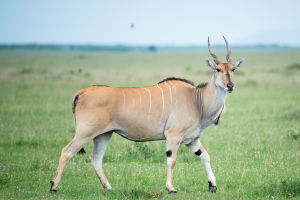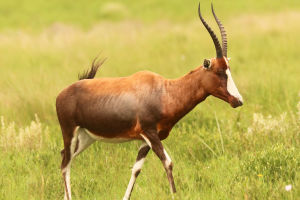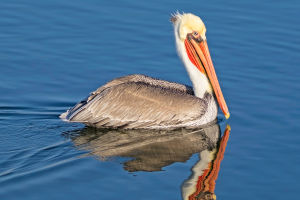The lion is a large carnivorous animal belonging to the cat family, Panthera genus, and Carnivora order. Lions are known for their majestic appearance and are native to Africa and Asia. The species is considered the largest of all cats, with a large and well-proportioned body, long limbs, and the distinction of being the only dimorphic cat in the world.
The title of "King of the Prairie" is befitting of the lion as it is the top predator among the African carnivorous cats. Wild African male lions, on average, weigh around 240 kilograms and can reach a total length of 2.4 to 3.3 meters.
Their hair is short, and their body color varies from light gray, and yellow to brown. Male lions have an additional physical feature-a long mane, with a color range from light brown to dark brown, and sometimes black. The mane extends to the shoulders and chest, making the male lion more prominent than the females.
The lion's distribution range is relatively narrow, mainly in Africa, with only a slight distribution in the Gir region of India.
Lions generally live in groups called pride, with about 5-20 members. Each pride has a clear territorial area, with a minimum range of 20 square kilometers.
Among the pride, female lions are the primary hunters, utilizing clever hunting strategies and teamwork to trap and catch prey that would be difficult to capture alone. They use the same "team approach" for other pride activities.
Lions are known for their explosive speed, with an average sprinting speed of up to 70 kilometers per hour, making their impact very powerful. A male lion sprinting at full strength can even knock down a hyena, injuring it severely, almost as powerful as a miniature car.
According to zoologists' tests, an adult male lion's bite force is 960 catties, slightly lower than that of a tiger, but still capable of crushing the head of an antelope easily. The lion's teeth are also exceptionally sharp. Their huge canine teeth can bite through a pangolin's body, indicating their deadly killing power.
Lions have highly developed senses, with a keen sense of smell, and thousands of olfactory cells distributed on their noses, enabling them to detect the smell of meat from thousands of meters away. Lions are also very sensitive to light, with 6-10 times the light sensitivity of humans, making their night vision exceptionally good.
Lions continue to play an important role in many modern fields, from national symbols to conservation and tourism. For example, the lion often appears on national flags, coats of arms, and emblems, such as the national flags of the United Kingdom and Singapore, which feature lion patterns.
Lions are also vital for wildlife conservation as their numbers are declining due to human activities and environmental changes. Many wildlife conservation organizations are dedicated to protecting and restoring the lion's population, ensuring the species' survival and reproduction.
Finally, lions are popular among tourists, with many people dreaming of seeing wild lions on the African grasslands. However, people must pay attention to the conservation of wildlife and their habitats, protecting lions, and their living environment while sightseeing or taking pictures, so as not to cause disturbance or harm to them.
Lions are not only fascinating animals to observe, but they also hold an important place in various fields, from ancient culture and art to modern-day tourism and wildlife conservation. It is crucial to protect these magnificent animals and their habitats for future generations to appreciate and admire.


